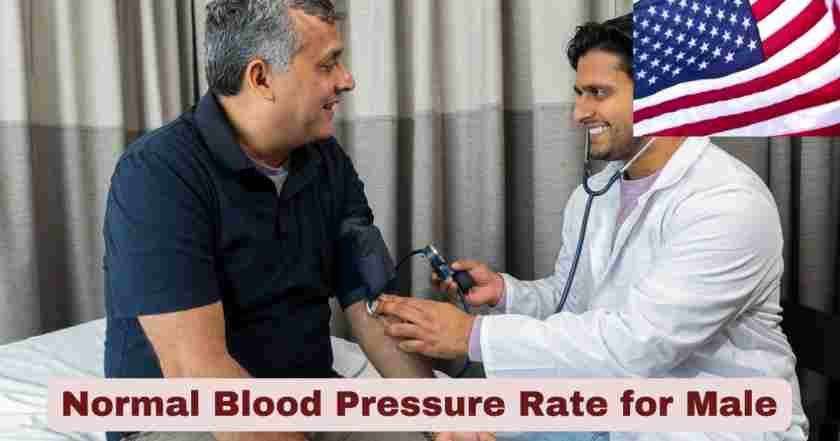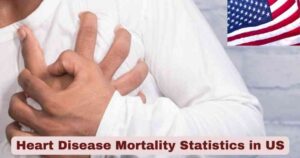Understanding normal blood pressure rates for males has become increasingly critical in 2025, as cardiovascular disease remains the leading cause of death among men worldwide. With updated guidelines and emerging research on male-specific factors affecting blood pressure, this comprehensive guide provides the latest 2025 recommendations, statistics, and evidence-based strategies specifically tailored for men’s cardiovascular health management.
Stats & Facts about Normal Blood Pressure Rate for Male 2025
The 2025 statistics reveal alarming trends in male hypertension prevalence that demand immediate attention from healthcare providers and men themselves. Current data shows that approximately 50.8% of men over 20 have high blood pressure, representing a higher prevalence than their female counterparts and highlighting the urgent need for targeted intervention strategies.
| Key Statistic | Male Data 2025 | Clinical Significance |
|---|---|---|
| Overall Hypertension Prevalence | 50.8% of men | Higher than women (44.6%) |
| Age 18-39 Hypertension Rate | 28.7% | Earlier onset than women |
| Age 40-59 Hypertension Rate | 56.2% | Peak working-age impact |
| Age 60+ Hypertension Rate | 68.4% | Slightly lower than women post-60 |
| Awareness Rate Among Hypertensive Men | 52.1% | Lower awareness than women |
| Treatment Rate Among Diagnosed Men | 61.3% | Concerning treatment gaps |
Men’s blood pressure patterns show distinct characteristics that differentiate them from women throughout their lifespan. Notably, men develop elevated blood pressure earlier in life, with significant increases beginning in their late twenties and early thirties. This earlier onset pattern places men at higher cardiovascular risk during their prime working years, contributing to increased rates of heart attacks and strokes before age 65.
The 2025 data reveals concerning gaps in awareness and treatment among male populations. Nearly half of hypertensive men remain unaware of their condition, and among those diagnosed, treatment compliance rates lag significantly behind women. This awareness deficit contributes to the higher rates of cardiovascular complications observed in men, including sudden cardiac death and aggressive forms of heart disease.
Racial and ethnic disparities in male blood pressure rates present significant public health challenges in 2025. Non-Hispanic Black men show the highest prevalence at 58.6%, compared to 49.1% for non-Hispanic White men and 48.3% for Hispanic men. These disparities reflect complex interactions between genetic predisposition, socioeconomic factors, and access to healthcare that require targeted interventions.
Occupational and lifestyle factors uniquely affect male blood pressure patterns in 2025. High-stress careers, shift work, and physically demanding jobs common among men contribute to elevated blood pressure rates. Additionally, men’s tendency to delay healthcare seeking and prioritize work over health maintenance exacerbates these occupational risk factors.
Normal Blood Pressure Rate for Male in 2025
The 2025 AHA/ACC guidelines establish that normal blood pressure for all adults, including men, remains less than 120/80 mmHg, with no gender-specific variations in target levels. This universal standard reflects evidence that optimal cardiovascular protection occurs at consistent blood pressure levels regardless of gender, though the approach to achieving these targets may differ based on male-specific risk factors.
| Blood Pressure Category | Systolic (mmHg) | Diastolic (mmHg) | Male-Specific Considerations |
|---|---|---|---|
| Normal | Less than 120 | AND Less than 80 | Ideal for all men regardless of age |
| Elevated | 120-129 | AND Less than 80 | Critical intervention window for men |
| High Blood Pressure Stage 1 | 130-139 | OR 80-89 | Earlier medication consideration for men |
| High Blood Pressure Stage 2 | 140/90 or higher | OR 90 or higher | Aggressive treatment typically required |
| Hypertensive Crisis | Higher than 180 | AND/OR Higher than 120 | Emergency intervention essential |
The maintenance of universal blood pressure targets for men reflects extensive research demonstrating that cardiovascular benefits occur at consistent levels across populations. However, achieving these targets in men often requires addressing gender-specific challenges including higher baseline cardiovascular risk, occupational stressors, and behavioral factors that may impede blood pressure control. Men typically require more intensive lifestyle modifications and earlier pharmacological intervention to achieve optimal blood pressure levels.
For younger men (ages 18-39), maintaining normal blood pressure rates requires particular attention to lifestyle factors that commonly affect this demographic. High sodium intake from processed foods, excessive alcohol consumption, and sedentary behavior patterns frequently observed in young men can establish hypertensive patterns early in life. The 2025 guidelines emphasize that men in this age group who achieve and maintain normal blood pressure significantly reduce their lifetime cardiovascular risk.
Middle-aged men (40-59 years) face unique challenges in blood pressure management as they enter peak career stress periods while experiencing physiological changes that promote hypertension. Testosterone decline, weight gain, and increased insulin resistance commonly observed during this life phase contribute to rising blood pressure trends. Men in this demographic require comprehensive risk assessment and often benefit from combination approaches that address multiple cardiovascular risk factors simultaneously.
Age-Specific Normal Blood Pressure Guidelines for Males
Understanding how normal blood pressure rate for male populations varies across different life stages is essential for developing effective prevention and treatment strategies. While the target blood pressure remains consistent, monitoring frequency, intervention thresholds, and treatment approaches must adapt to age-related physiological and lifestyle changes affecting men.
| Age Group | Optimal Range | Monitoring Frequency | Male-Specific Considerations |
|---|---|---|---|
| 18-29 years | <120/80 mmHg | Every 2 years | Athletic heart considerations, lifestyle establishment |
| 30-39 years | <120/80 mmHg | Annually | Career stress impact, weight gain prevention |
| 40-49 years | <120/80 mmHg | Every 6 months | Testosterone decline effects, metabolic changes |
| 50-59 years | <120/80 mmHg | Every 3-4 months | Cardiovascular risk acceleration, medication optimization |
| 60+ years | <120/80 mmHg | Every 3 months | Comorbidity management, medication interactions |
Young men (18-29 years) often present unique challenges in blood pressure assessment due to athletic participation and physical fitness levels that can affect readings. Athletic heart syndrome, common in this age group, may produce blood pressure patterns that require specialized interpretation. Healthcare providers must distinguish between physiological adaptations to exercise and pathological blood pressure elevation in active young men.
The 30-39 age group represents a critical transition period where men begin experiencing career-related stress and lifestyle changes that significantly impact blood pressure. Weight gain during this decade, often related to decreased physical activity and increased caloric intake, directly contributes to blood pressure elevation. Early intervention during this period can prevent the establishment of hypertensive patterns that become more difficult to reverse in later decades.
Men in their 40s and 50s face multiple physiological changes that promote blood pressure elevation, including declining testosterone levels and increasing insulin resistance. These hormonal changes, combined with accumulated lifestyle factors and occupational stress, create a perfect storm for cardiovascular risk development. The 2025 guidelines recommend more aggressive monitoring and earlier intervention thresholds for men in this age group due to their elevated baseline cardiovascular risk.
Older men (60+ years) require comprehensive cardiovascular risk management that extends beyond blood pressure control alone. Age-related changes in arterial stiffness, kidney function, and medication metabolism necessitate individualized approaches to blood pressure management. The goal remains achieving normal blood pressure rates while minimizing medication-related side effects and interactions that are more common in this population.
Testosterone and Male Blood Pressure Relationships
The relationship between testosterone levels and normal blood pressure rate for male populations is complex and has significant implications for cardiovascular health management. Research in 2025 continues to reveal intricate connections between male hormones and blood pressure regulation that influence both treatment approaches and outcomes.
| Testosterone Level | Blood Pressure Impact | Age Group Most Affected | Management Considerations |
|---|---|---|---|
| Normal Range (300-800 ng/dL) | Neutral to beneficial effect | All ages | Maintain healthy lifestyle |
| Low Normal (250-350 ng/dL) | Potential slight elevation | Ages 40+ | Monitor for decline |
| Low Testosterone (<250 ng/dL) | Increased hypertension risk | Ages 50+ | Consider hormone evaluation |
| Very Low (<200 ng/dL) | Significant cardiovascular risk | Ages 60+ | Comprehensive assessment needed |
| Testosterone Therapy Recipients | Variable blood pressure effects | Ages 40+ | Close monitoring required |
Natural testosterone decline in men, beginning around age 30 and accelerating after age 40, correlates with increasing blood pressure trends observed in male populations. Research demonstrates an inverse relationship between testosterone levels and both systolic and diastolic blood pressure, suggesting that hormonal changes contribute to the cardiovascular risk acceleration seen in middle-aged men. This relationship explains why men experience earlier onset hypertension compared to premenopausal women who maintain protective estrogen levels.
Low testosterone levels in men are associated with multiple cardiovascular risk factors beyond blood pressure elevation. These include increased abdominal obesity, insulin resistance, and chronic inflammation, all of which contribute to hypertension development. Men with documented low testosterone often require comprehensive metabolic evaluation and may benefit from hormone replacement therapy as part of their cardiovascular risk reduction strategy.
Testosterone replacement therapy (TRT) presents complex considerations for blood pressure management in men. While some studies suggest TRT may improve blood pressure control through beneficial effects on body composition and insulin sensitivity, others indicate potential cardiovascular risks, particularly in older men with existing heart disease. The 2025 guidelines recommend careful cardiovascular monitoring for men receiving testosterone therapy, with particular attention to blood pressure trends.
The interaction between testosterone levels and other cardiovascular risk factors creates multiplicative effects on blood pressure in men. Research shows that age over 65 years and obesity negatively impact the inverse correlation between testosterone and hypertension, suggesting that older, overweight men with low testosterone face particularly high cardiovascular risks. This population requires intensive monitoring and often benefits from multifaceted intervention approaches.
Occupational and Lifestyle Factors Affecting Male Blood Pressure
Male-dominated occupations and lifestyle patterns create unique challenges for maintaining normal blood pressure rate for male workers and their families. The 2025 guidelines recognize these gender-specific factors and provide targeted recommendations for blood pressure management in various occupational settings and lifestyle contexts.
| Risk Factor | Male-Specific Impact | Blood Pressure Effect | Intervention Strategy |
|---|---|---|---|
| High-Stress Careers | Leadership roles, competitive environments | 5-15 mmHg elevation | Stress management training, workload modification |
| Shift Work | Circadian rhythm disruption | 3-8 mmHg elevation | Sleep hygiene, schedule optimization |
| Physical Labor Jobs | Dehydration, heat exposure | Variable effects | Hydration protocols, heat protection |
| Long Commutes | Sedentary time, traffic stress | 2-5 mmHg elevation | Active commuting options, stress reduction |
| Overtime Work | Chronic stress, poor work-life balance | 4-10 mmHg elevation | Time management, employer wellness programs |
| Business Travel | Schedule disruption, poor food choices | 3-7 mmHg elevation | Travel health protocols, meal planning |
High-stress careers common among men, including executive positions, sales roles, and competitive industries, significantly contribute to elevated blood pressure patterns. Chronic activation of the sympathetic nervous system in response to work-related stress creates sustained blood pressure elevation that can become permanent without intervention. Men in high-stress occupations often require workplace-based interventions and employer support to achieve optimal blood pressure control.
Shift work, particularly rotating shifts and overnight work, disrupts circadian rhythms and creates metabolic changes that promote hypertension in male workers. Sleep deprivation and irregular eating patterns associated with shift work compound these effects, creating multiple pathways for blood pressure elevation. The 2025 guidelines recommend specialized monitoring protocols for shift workers and emphasize the importance of sleep hygiene in blood pressure management.
Physical labor occupations present unique challenges for blood pressure management due to the complex relationship between acute exercise effects and chronic health impacts. While regular physical activity generally benefits blood pressure, occupational physical demands combined with environmental stressors (heat, noise, chemical exposure) can create adverse cardiovascular effects. Men in these occupations require tailored fitness programs that complement rather than duplicate their work-related physical activity.
Technology-driven lifestyle changes affecting modern men include prolonged sitting, increased screen time, and reduced physical activity levels that directly impact blood pressure. The rise of remote work and sedentary careers has created new cardiovascular risk patterns among men that require updated prevention strategies. Workplace wellness programs specifically designed for male employees have shown effectiveness in improving blood pressure control and reducing cardiovascular risk.
Dietary Approaches for Male Blood Pressure Management
Nutritional strategies for achieving normal blood pressure rate for male populations must account for men’s typically higher caloric needs, different food preferences, and unique metabolic characteristics. The 2025 guidelines emphasize evidence-based dietary patterns that provide cardiovascular benefits while being practical and sustainable for male lifestyle patterns.
| Dietary Approach | Key Components | Male-Specific Benefits | Expected BP Reduction |
|---|---|---|---|
| DASH Diet Modified for Men | Higher protein, moderate carbs | Muscle mass preservation | 8-14 mmHg systolic |
| Mediterranean Pattern | Emphasis on fish, nuts, olive oil | Anti-inflammatory effects | 6-12 mmHg systolic |
| High-Protein, Low-Sodium | Lean meats, reduced processed foods | Satiety and muscle maintenance | 6-10 mmHg systolic |
| Plant-Forward Approach | Increased vegetables, legumes | Fiber and micronutrients | 4-8 mmHg systolic |
| Intermittent Fasting | Time-restricted eating | Weight management | 3-7 mmHg systolic |
| Low-Processed Food Diet | Whole foods emphasis | Reduced sodium and additives | 5-9 mmHg systolic |
The DASH (Dietary Approaches to Stop Hypertension) eating pattern, when modified to meet men’s higher protein requirements, provides excellent blood pressure benefits while maintaining muscle mass. Men typically require 10-15% more protein than women to maintain lean body mass, and incorporating this into a DASH-style eating plan supports both cardiovascular health and body composition goals. Research shows that men following modified DASH patterns achieve greater blood pressure reductions when protein intake is optimized for their body composition needs.
Mediterranean-style eating patterns offer particular advantages for men due to the emphasis on omega-3 fatty acids and anti-inflammatory compounds. The inclusion of fatty fish, nuts, and olive oil provides cardiovascular protection while offering foods that align with male taste preferences. This dietary pattern has demonstrated effectiveness in reducing blood pressure while also supporting testosterone levels and overall male health markers.
Sodium reduction strategies must be tailored to men’s eating patterns, which often include higher consumption of processed and restaurant foods. Men consume an average of 4,200mg of sodium daily, significantly exceeding recommended levels, primarily through processed meats, restaurant meals, and convenience foods. Practical approaches for men include learning to identify high-sodium foods, cooking skills development, and finding lower-sodium alternatives to favorite foods.
Meal timing and intermittent fasting approaches have shown promise for blood pressure management in men, particularly those struggling with weight management. Time-restricted eating patterns may align well with male work schedules and social eating patterns while providing metabolic benefits that support blood pressure control. However, men with existing cardiovascular conditions should consult healthcare providers before implementing intermittent fasting protocols.
Exercise and Physical Activity for Male Blood Pressure Control
Physical activity recommendations for men must address their typically higher baseline fitness levels, preferences for competitive activities, and unique physiological responses to exercise. The 2025 guidelines provide gender-specific exercise prescriptions that maximize blood pressure benefits while accounting for male exercise preferences and injury prevention.
| Exercise Type | Recommended Duration | Male-Specific Benefits | BP Reduction Potential |
|---|---|---|---|
| Aerobic Training | 150-300 min moderate/week | Cardiovascular efficiency | 5-10 mmHg systolic |
| Resistance Training | 3-4 sessions/week | Muscle mass and metabolism | 3-6 mmHg systolic |
| High-Intensity Intervals | 75-100 min vigorous/week | Time efficiency, competitive element | 6-12 mmHg systolic |
| Sports Activities | 3-4 hours/week | Social engagement, motivation | 4-8 mmHg systolic |
| Functional Training | 2-3 sessions/week | Real-world strength applications | 3-5 mmHg systolic |
| Flexibility/Mobility | Daily, 10-20 minutes | Injury prevention, stress reduction | 2-4 mmHg systolic |
Aerobic exercise provides the most significant blood pressure benefits for men, with regular participation capable of reducing systolic pressure by 5-10 mmHg. Men often prefer competitive or goal-oriented aerobic activities such as running, cycling, or swimming that provide measurable progress markers. The key is finding activities that men will continue long-term, as consistency provides greater benefits than occasional high-intensity sessions.
Resistance training offers unique advantages for men by supporting muscle mass maintenance and metabolic health that complement blood pressure management. Men naturally have higher muscle mass than women and require strength training to maintain this advantage throughout aging. The 2025 guidelines recommend progressive resistance training protocols that provide blood pressure benefits while supporting overall male health and functional capacity.
High-intensity interval training (HIIT) appeals to many men due to its time efficiency and competitive nature, while providing excellent blood pressure benefits. HIIT protocols can be adapted to various fitness levels and preferences, from sprint intervals to circuit training with weights. Research shows that men who engage in regular HIIT achieve greater blood pressure reductions than those following moderate-intensity continuous exercise alone.
Sports participation provides psychological and social benefits that support long-term adherence to physical activity among men. Team sports, competitive leagues, and individual sports offer structured activity opportunities that many men find more engaging than traditional exercise routines. The social support and competitive elements inherent in sports participation can significantly improve long-term adherence to physical activity recommendations.
Sleep and Stress Management for Male Blood Pressure
Sleep quality and stress management present unique challenges for men that significantly impact their ability to maintain normal blood pressure rates. Male-specific factors including work stress, family responsibilities, and cultural expectations around stress management require targeted interventions for optimal blood pressure control.
| Factor | Male-Specific Pattern | BP Impact | Management Strategy |
|---|---|---|---|
| Sleep Duration | Often <7 hours nightly | 2-8 mmHg elevation | Sleep scheduling, sleep hygiene |
| Sleep Apnea | 2-3x higher prevalence | 5-15 mmHg elevation | Screening, CPAP therapy |
| Work Stress | Career pressure, job security | 5-12 mmHg elevation | Stress reduction techniques |
| Financial Stress | Provider role pressure | 3-8 mmHg elevation | Financial counseling, budgeting |
| Relationship Stress | Communication challenges | 4-10 mmHg elevation | Counseling, communication skills |
| Social Isolation | Lower social support | 3-7 mmHg elevation | Social engagement activities |
Sleep apnea affects men at rates 2-3 times higher than women and represents a major contributor to treatment-resistant hypertension in male populations. The combination of upper airway obstruction and resulting sleep fragmentation creates multiple pathways for blood pressure elevation that persist throughout the day. Men with unexplained hypertension or those requiring multiple medications for blood pressure control should be screened for sleep apnea, as treatment can significantly improve blood pressure outcomes.
Work-related stress affects men differently than women due to cultural expectations around career success and financial provision for families. Men often internalize work stress and may be less likely to seek help or discuss stress-related problems with healthcare providers. Workplace wellness programs specifically designed for male employees, including stress management training and mental health resources, have shown effectiveness in reducing work-related blood pressure elevation.
Traditional masculine norms may discourage men from seeking help for stress-related problems or adopting stress management techniques perceived as “feminine.” This cultural barrier can prevent men from accessing effective stress reduction interventions such as meditation, yoga, or counseling. Healthcare providers must present stress management options in ways that appeal to men, emphasizing performance benefits and competitive advantages rather than emotional or psychological aspects.
Social isolation and limited emotional support networks common among men contribute to chronic stress and elevated blood pressure. Men typically have smaller social support networks than women and may rely heavily on romantic partners for emotional support. Building diverse social connections through sports, hobbies, volunteer work, or professional organizations can provide stress reduction benefits that support blood pressure management.
Medical Conditions Affecting Male Blood Pressure
Several medical conditions disproportionately affect men and significantly impact their ability to achieve and maintain normal blood pressure rates. Understanding these gender-specific health issues helps healthcare providers develop comprehensive management strategies that address underlying causes of hypertension in male patients.
| Condition | Male Prevalence | BP Impact | Management Considerations |
|---|---|---|---|
| Sleep Apnea | 24% of men vs 9% of women | 5-15 mmHg elevation | CPAP therapy, weight management |
| Metabolic Syndrome | Higher visceral fat accumulation | 8-20 mmHg elevation | Lifestyle modification, medication |
| Low Testosterone | 40% of men over 45 | 3-8 mmHg elevation | Hormone evaluation, replacement therapy |
| Erectile Dysfunction | Strong cardiovascular correlation | Indicator of vascular disease | Comprehensive cardiovascular assessment |
| Kidney Disease | Earlier onset in men | Progressive BP elevation | Nephrology referral, specialized management |
| Alcohol Use Disorder | 2x higher in men | 5-12 mmHg elevation | Addiction treatment, gradual reduction |
Obstructive sleep apnea represents one of the most significant yet underdiagnosed contributors to hypertension in men. The prevalence of sleep apnea increases dramatically with age and weight, affecting nearly one-quarter of middle-aged men. Continuous positive airway pressure (CPAP) therapy can reduce blood pressure by 5-15 mmHg in men with moderate to severe sleep apnea, making diagnosis and treatment essential for blood pressure management.
Metabolic syndrome, characterized by central obesity, insulin resistance, and dyslipidemia, affects men at higher rates and earlier ages than women. The male pattern of visceral fat accumulation creates inflammatory processes that directly contribute to hypertension development and progression. Men with metabolic syndrome require comprehensive lifestyle interventions targeting multiple cardiovascular risk factors simultaneously, often including medication management for optimal blood pressure control.
Low testosterone levels in aging men create multiple pathways for blood pressure elevation and cardiovascular risk. Research demonstrates inverse correlations between testosterone levels and blood pressure in men, suggesting that hormonal decline contributes to the cardiovascular risk acceleration observed in middle-aged and older men. Testosterone replacement therapy may benefit carefully selected men with documented deficiency, but requires close monitoring for cardiovascular effects.
Erectile dysfunction serves as an early warning sign for cardiovascular disease in men and strongly correlates with hypertension prevalence. The vascular mechanisms underlying erectile dysfunction often precede clinically apparent cardiovascular disease by several years. Men presenting with erectile dysfunction should receive comprehensive cardiovascular risk assessment, including blood pressure evaluation and management, as this may prevent future cardiovascular events.
Technology and Monitoring for Male Blood Pressure
Advanced monitoring technologies and digital health solutions offer new opportunities for men to engage in blood pressure management while addressing traditional barriers to healthcare participation. The 2025 guidelines incorporate evidence-based recommendations for technology use that align with male preferences for data-driven and autonomous health management approaches.
| Technology Type | Male Adoption Rate | Accuracy Level | Key Benefits |
|---|---|---|---|
| Home BP Monitors | 68% of hypertensive men | ±3 mmHg when validated | Convenience, privacy, frequent monitoring |
| Smartphone Apps | 45% of tech-savvy men | Variable, user-dependent | Data tracking, trend analysis |
| Wearable Devices | 38% of active men | Trending accuracy only | Continuous monitoring, fitness integration |
| Telemedicine Platforms | 52% adoption in 2025 | Provider-dependent | Remote consultation, medication management |
| AI-Powered Analysis | Early adoption phase | Under validation | Pattern recognition, predictive analytics |
| Connected Devices | Growing market | FDA-approved options | Automatic data sharing with providers |
Home blood pressure monitoring has become essential for accurate assessment in men, who often experience significant white coat hypertension during clinical visits. Men may be more likely than women to have elevated blood pressure readings in healthcare settings due to work-related stress or discomfort with medical environments. Validated home monitoring devices provide more accurate representations of typical blood pressure patterns and enable better treatment decisions.
Smartphone applications designed for blood pressure tracking appeal to men’s preferences for data analysis and technology integration. Apps that provide graphical trends, correlations with lifestyle factors, and goal-setting capabilities tend to have higher engagement rates among male users. However, men should ensure that any apps they use integrate with validated blood pressure monitors rather than relying on smartphone-based measurement attempts, which lack accuracy.
Wearable fitness devices increasingly incorporate blood pressure estimation capabilities that appeal to active men interested in comprehensive health monitoring. While current wearable technology cannot replace validated blood pressure cuffs for diagnostic purposes, these devices can provide valuable trending information and motivation for lifestyle modifications. Men using wearable devices should understand their limitations and continue regular validation with approved monitoring equipment.
Telemedicine platforms have shown particular promise for engaging men in blood pressure management by reducing barriers to healthcare access. Men who might delay or avoid in-person medical appointments may be more willing to participate in remote monitoring programs and virtual consultations. These platforms can provide regular check-ins, medication adjustments, and lifestyle coaching while accommodating work schedules and travel demands common among men.
Medication Management for Male Blood Pressure
Pharmacological approaches to achieving normal blood pressure rate for male patients must consider gender-specific factors including drug metabolism differences, side effect profiles, and adherence challenges unique to men. The 2025 guidelines provide updated recommendations for medication selection and management strategies tailored to male physiology and lifestyle factors.
| Medication Class | Male-Specific Considerations | Common Side Effects in Men | Adherence Strategies |
|---|---|---|---|
| ACE Inhibitors | Generally well-tolerated | Dry cough, less common in men | Once-daily dosing preferred |
| ARBs (Angiotensin Receptor Blockers) | Excellent tolerance profile | Minimal side effects | Good choice for active men |
| Beta Blockers | May affect exercise performance | Fatigue, erectile dysfunction | Monitor exercise capacity |
| Calcium Channel Blockers | Effective in older men | Ankle swelling, dizziness | Evening dosing may help |
| Diuretics | Risk of electrolyte imbalance | Erectile dysfunction, urination | Monitor potassium levels |
| Combination Therapies | Simplified dosing regimens | Additive effects possible | Single-pill combinations |
ACE inhibitors represent first-line therapy for many men due to their cardiovascular protective effects and generally favorable side effect profile. Men experience lower rates of the dry cough side effect compared to women, making this class more tolerable for male patients. The cardioprotective benefits extend beyond blood pressure reduction, providing additional advantages for men’s higher baseline cardiovascular risk.
Angiotensin receptor blockers (ARBs) offer excellent alternatives for men who cannot tolerate ACE inhibitors or require additional blood pressure reduction. This medication class has minimal impact on exercise performance and sexual function, important considerations for active men. ARBs provide similar cardiovascular protection to ACE inhibitors while offering superior tolerability profiles that support long-term adherence.
Beta blockers require careful consideration in active men due to their potential impact on exercise capacity and heart rate response. While these medications provide excellent cardiovascular protection, they may limit exercise performance and mask hypoglycemia in diabetic men. Healthcare providers should discuss exercise goals with men prescribed beta blockers and consider alternative agents for competitive athletes or highly active individuals.
Combination therapy strategies have shown particular effectiveness in men who require multiple medications to achieve blood pressure goals. Single-pill combinations improve adherence by reducing pill burden and simplifying dosing regimens, addressing common barriers to medication compliance among men. The 2025 guidelines recommend early consideration of combination therapy for men with significantly elevated blood pressure or multiple cardiovascular risk factors.
When to Seek Medical Attention
Recognizing when blood pressure readings require immediate medical intervention is crucial for preventing cardiovascular emergencies in men, who often delay seeking healthcare until symptoms become severe. The 2025 guidelines provide clear protocols for different levels of blood pressure elevation and associated symptoms that require urgent attention.
| Blood Pressure Reading | Classification | Immediate Action Required | Male-Specific Considerations |
|---|---|---|---|
| <120/80 mmHg | Normal | Continue healthy lifestyle | Maintain regular monitoring |
| 120-129/<80 mmHg | Elevated | Lifestyle modifications | Critical intervention window |
| 130-139/80-89 mmHg | Stage 1 Hypertension | Medical evaluation within 1 month | Consider earlier medication for high-risk men |
| ≥140/90 mmHg | Stage 2 Hypertension | Medical evaluation within 1 week | Likely medication required |
| >180/>120 mmHg | Hypertensive Crisis | Emergency medical care immediately | Higher risk of complications in men |
Men should seek emergency medical attention for blood pressure readings above 180/120 mmHg, particularly when accompanied by chest pain, shortness of breath, severe headache, or visual disturbances. These symptoms indicate hypertensive crisis with potential organ damage that requires immediate intervention. Men are at higher risk for complications during hypertensive crises due to their elevated baseline cardiovascular risk and tendency to delay seeking medical care.
Stage 1 hypertension (130-139/80-89 mmHg) in men warrants more aggressive intervention than in women due to their higher baseline cardiovascular risk. Men with readings in this range should receive comprehensive cardiovascular risk assessment and may benefit from earlier medication initiation, particularly those with additional risk factors such as diabetes, kidney disease, or family history of heart disease. The 2025 guidelines recommend lower thresholds for medication initiation in high-risk men compared to previous recommendations.
Men experiencing new symptoms potentially related to blood pressure elevation should not assume these are normal signs of aging or stress. Symptoms such as persistent headaches, dizziness, chest discomfort, or decreased exercise tolerance may indicate inadequate blood pressure control and require medical evaluation. Early intervention can prevent progression to more severe cardiovascular complications that are more common in men.
Regular blood pressure monitoring becomes increasingly important for men over age 40, with frequency determined by baseline readings and cardiovascular risk factors. Men with elevated or high blood pressure readings should maintain home monitoring logs and communicate regularly with healthcare providers about trends and symptoms. This proactive approach can identify problems before they progress to emergency situations.
Future Trends in Male Blood Pressure Management
The future of blood pressure management for men is evolving rapidly with advances in precision medicine, technology integration, and personalized treatment approaches. Emerging trends in 2025 suggest significant developments in how we understand, monitor, and treat hypertension in male populations over the coming decade.
| Emerging Trend | Development Stage | Potential Male-Specific Impact | Implementation Timeline |
|---|---|---|---|
| Precision Medicine | Clinical validation | Testosterone-based treatment algorithms | 3-5 years |
| Continuous BP Monitoring | Early commercial phase | Workplace and athletic applications | 1-2 years |
| AI-Powered Risk Prediction | Pilot programs | Occupational health integration | 2-3 years |
| Genetic Testing | Research expansion | Male-specific risk stratification | 5-10 years |
| Digital Therapeutics | FDA approval process | App-based lifestyle interventions | 1-3 years |
| Workplace Wellness Tech | Growing adoption | Employer-sponsored monitoring | Current |
Precision medicine approaches specific to men are showing promise for optimizing blood pressure management based on individual hormonal profiles and genetic factors. Research into testosterone receptor variations and their influence on cardiovascular response to different medications may lead to personalized treatment protocols for men. This approach could significantly improve treatment efficacy while reducing side effects that commonly affect medication adherence in male patients.
Continuous blood pressure monitoring technology is advancing rapidly, with particular applications for men in high-stress occupations or competitive athletics. These devices may provide real-time feedback about work-related stress impacts on blood pressure and enable immediate intervention strategies. Integration with workplace wellness programs could revolutionize occupational health approaches to cardiovascular disease prevention among men.
Disclaimer: The data research report we present here is based on information found from various sources. We are not liable for any financial loss, errors, or damages of any kind that may result from the use of the information herein. We acknowledge that though we try to report accurately, we cannot verify the absolute facts of everything that has been represented.







